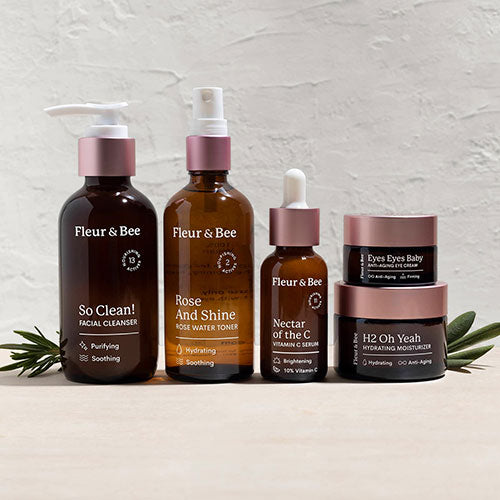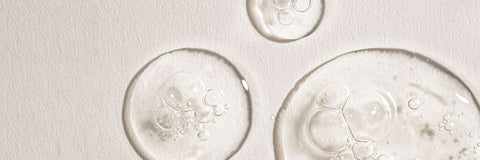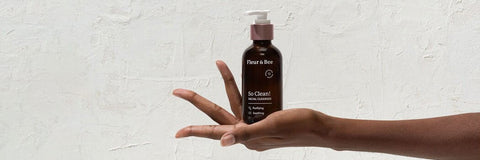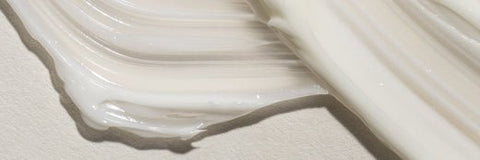As our environmental challenges mount, eco-consciousness is exploding among concerned citizens looking to reduce their footprint and protect our little corner of the universe. And corporations and businesses are taking notice.
As big fans of Mother Earth, we think that's great! But while this planet-friendly trend is a step in the right direction, it can create some confusion for the everyday person. Suddenly there are tons of new terms to learn and claims to sort through. And as any eco-minded consumer standing in a beauty aisle with a head full of questions will tell you — it's not always easy being green.
But it can be! Read on to learn about the ins and outs of what green beauty is, how it's related to clean beauty, the hallmarks of green beauty brands, how to spot a green beauty product in the store, and more.
IN A NUTSHELL
Main Takeaways: The term “green beauty” isn’t regulated, but when we say our products are green, we mean that they are sourced, produced, and packaged in an ethical and sustainable way.
Good to Know: Raising and processing livestock takes a huge toll on the environment. It depletes water, natural resources, and habitats and generates more greenhouse gas emissions than almost any other sector.
Recommended Products: Deluxe Set.
What Is Green Beauty?
Green beauty refers to beauty products that are sourced, produced, and packaged in an ethical and sustainable way that's kind to the planet. Sadly, a fair amount of foul play goes on when it comes to brands claiming to be eco-friendly. Because terms like "green", "clean", and "natural" are subjective and not regulated.
Here at Fleur & Bee, our products are crafted with sustainably sourced ingredients and are made with 100% renewable wind energy and our packaging is up to 90% recyclable.
We use clean, nontoxic ingredients, and all our products are free of animal ingredients or animal byproducts. (We're even Leaping Bunny certified.) Now, why does that matter? Well, it's not just animals that benefit from being left out of the equation — using plant-based ingredients is better for the planet, too. Raising and processing livestock takes a huge toll on the environment. It depletes water, natural resources, and habitats and generates more greenhouse gas emissions than almost any other sector.
It's also not great for the environment to process the harmful chemicals that show up in some beauty products. Not only is it bad for your health to put these on your body, but imagine what happens when leftover toxic products get tossed into a landfill or make their way into the ocean — Mother Nature suffers.

How to Tell if a Product is Green
We know it can be hard to tell if a brand or product is truly green when you’re standing in the skin care aisle. Here are a few telltale signs that will help you single out good green contenders:
The ingredients.
One of the best defenses against greenwashing is to know what ingredients to look for and which to avoid. Take a moment to study labels. Ingredients like proteins, vitamins, and natural preservatives may have scientific-sounding names; but for the most part, you should be able to understand what's on the ingredients list. When in doubt, check it against this database of cosmetic terms.
It's important to note that not all synthetic ingredients are bad, either. Sometimes a synthetic that's been created in a lab is more sustainable and ethical than sourcing it from the environment. If it's a brand you trust, they'll be upfront about why they've chosen to go with a man-made version.
The packaging.
Sometimes packaging can't be entirely biodegradable or free of plastic (looking at you, mascara wands!). But that doesn't mean a company shouldn't try. Look for products in packaging that's as free of plastic as possible, sustainable, recyclable, uses soy-based inks or dyes, and recycled materials. A green beauty company will be proud to explain just how their packaging is eco-friendly right there on the product. And if you’re curious about how to recycle your Fleur & Bee packaging, you can check out our handy guide here.
The mission statement.
Green beauty companies often believe in purpose beyond profit. Check labels to see if their mission statement and values align with yours, and see if they explain how they employ regenerative operations. If they can't fit it on the packaging, you can bet they'll include it on their website!
The certifications.
Thankfully, there are programs out there that do the heavy lifting when it comes to deciding when a company practices what they preach. Certifications from Leaping Bunny, The Environmental Working Group (EWG), Forest Stewardship Council (FSC), USDA Organic, B-Corp, 1% For The Planet, Ecocert, NSF International, Fair Trade, and Rainforest Alliance are all good places to start.
Many of these certification processes are rigorous, but not all are perfect. Do a little digging to see which ones you're most confident in, and beware of dodgy-sounding or unknown certifications.
The terminology.
Green beauty companies are more than happy to share the details of their planet-saving efforts with their customers. Look for products that explicitly state what ingredients they've left out, like "petroleum-free", and avoid generic terms like "fragrance".
Also look for labels like vegan, cruelty-free, nontoxic, zero-waste, organic, naturally-derived, bio-based, biodegradable, recycled, recyclable, and sustainable. These terms aren't always regulated, but a green beauty company won't be shy about explaining just what is sustainable and ethical about their products. And when it comes down to it, the ingredients never lie.
Ready to get started on a green beauty routine? Our Deluxe Set offers a 5-step skincare routine, with our vegan and cruelty free cleanser, toner, vitamin C serum, eye cream and hydrating moisturizer.





